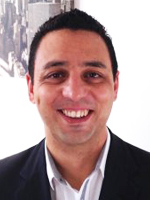Previous events - Page 218
Speaker: Vadim Makarov. Institute for Quantum Computing, University of Waterloo, Canada.
Transport of the FcRn ligands, IgG and albumin, across the human placenta
Julia Harz, UPMC Paris
To achieve a more precise prediction of the supersymmetric dark matter relic density, we have calculated next-to-leading order SUSY-QCD corrections to neutralino (co)annihilation processes including Coulomb enhancement effects. We demonstrate that these corrections can have significant impact on the prediction of the dark matter relic abundance and are thus of general interest for parameter studies. For particle physics observables at colliders, it has been common practice for many decades to estimate the theoretical uncertainty by studying the variation of the predicted cross sections with a priori unpredictable scales. In astroparticle physics, this has so far not been possible, since most of the observables were calculated at Born level only, so that the renormalization scheme and scale dependence could not be studied in a meaningful way. We will present the first quantitative study of the theoretical uncertainty of the neutralino dark matter relic density from scheme and scale variations.
(The slides will be available here)
Abstract: We first discuss C*-simplicity and the unique trace property for discrete groups in light of recent years' development. In particular, we consider amalgamated free products, and give conditions for such to be (and fail to be) C*-simple. Then we define radical and residual classes of groups, and explain that there exists a radical detecting C*-simplicity, in a similar way as the amenable radical detects the unique trace property. The talk is based on joint work with Nikolay A. Ivanov from Sofia University, Bulgaria.
Development of a DNA vaccine inducing HIV-1 Gagp24-reactive T cells
Hopkins, Kuhn, and Ravenel proved that, up to torsion, the Borel-equivariant cohomology of a G-space with coefficients in a height n-Morava E-theory is determined by its values on those abelian subgroups of G which are generated by n or fewer elements. When n=1, this is closely related to Artin's induction theorem for complex group representations. I will explain how to generalize the HKR result in two directions. First, we will establish the existence of a spectral sequence calculating the integral Borel-equivariant cohomology whose convergence properties imply the HKR theorem. Second, we will replace Morava E-theory with any L_n-local spectrum. Moreover, we can show, in some sense, a partial converse to this result: if an HKR style theorem holds for an E_\infty ring spectrum E, then K(n+j)_* E=0 for all j\geq 1. This partial converse has applications to the algebraic K-theory of structured ring spectra.
Scientific lecture by Dr. Jesmond Dalli, Sir Henry Dale Fellow and QMUL Lipid Mediator Unit Director at the Barts and The London School of Medicine and Dentistry, Queen Mary University of London.
By Jaap A. Kaandorp from University of Amsterdam
Welcome to the GeoHyd Lunch Seminar on Friday Nov. 25th @ 12:15in aud. 1 in the Geology building.
This Friday the journal club will discuss a paper by Sánchez et al (2004): Branching and Self-Organization in Marine Modular Colonial Organisms: A Model.
Join us!
Marit Sandstad, NORDITA Stockholm
The idea that black holes of a wide range of masses could form from highly overdense regions in the very early universe has been around since the early seventies, when it prompted Steven Hawking to derive the theory of Hawking radiation. Since then, no primordial black holes have been seen, but as more accurate observations of the universe and our surrounding galaxies have been made they have been suggested as possible culprits for unexplained cosmic rays, the supermassive black holes in the centres of galaxies or the entirety of dark matter. However, as the unexplained cosmic rays turned out to be non-detections, so far all we have got at present are constraints on their abundance from various observations across nearly all possible scales. However, having only constraints might not be entirely a disadvantage. If the mechanisms proposed for the formation of primordial black holes is correct, their non-existence implies that the primordial power spectrum from inflation cannot have been too large. This is very interesting as... [abstract continued below]
(The slides will be available here)
Anerobic production and purification of recombinant algal hydrogenase
Peter Müller (University of Texas at Austin) will give a seminar in the lunch area, 8th floor Niels Henrik Abels hus at 14:15.
We compute the generalized slices (as defined by Spitzweck-Østvær) of the motivic spectrum KQ in terms of motivic cohomology and generalized motivic cohomology, obtaining good agreement with the situation in classical topology and the results predicted by Markett-Schlichting.
Construction and evaluation of an scFv library for affinity maturation
Dear all CEES members: We are pleased to invite you to the Annual Student Conference! Update: The program is available at the conference website!
Bridget Falck, Postodoctoral fellow ITA
This Friday the journal club will discuss a paper by Bush, Hunt and Bambach (2016) in PNAS: Sex and the shifting biodiversity dynamics of marine animals in deep time.
Join us!
Integral projection models (IPMs) have become a popular tool to assess questions relating to eco-evolutionary dynamics. Within IPMs, change in a continuous trait of interest (body length, leaf area, horn size etc.) are modelled both within generations (growth) and across generations (inheritance). However, current methods of estimating growth and inheritance inherently fail to properly estimate phenotypic evolution.
This thursday, at the Speciation Journal Club, we will discuss a paper entitled "
Making sense of genomic islands of differentiation in light of speciation" by Wolf and Ellegren, published in 2016 in Nature Reviews Genetics
Kristina Rognlien Dahl (University of Oslo) is giving her inaugural lecture with the title: Stochastic analysis meets risk and reliability theory.
”Bycatch of harbour porpoise, harbour seal and grey seal in Norwegian gillnet fisheries”


